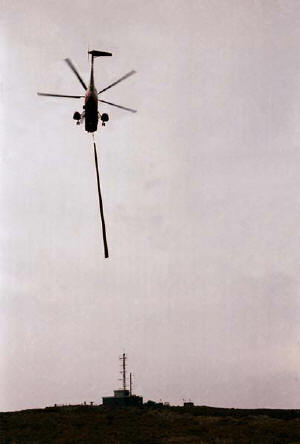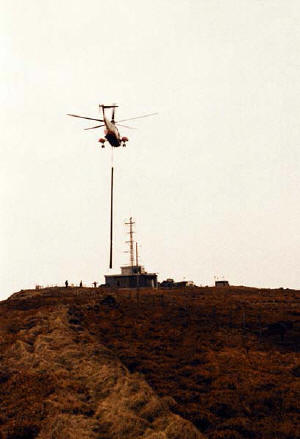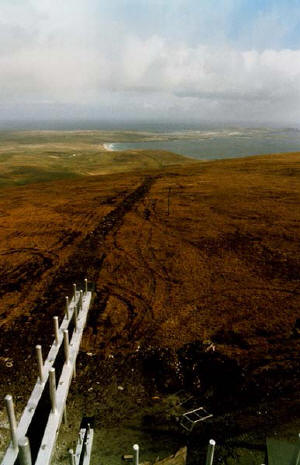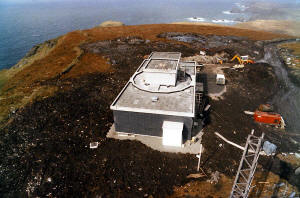|
BBCeng.info
Recollections of BBC engineering from 1922 to 1997 |
The British Broadcasting Corporation web site is: www.bbc.co.uk |
Transmitter Projects - Reminiscences
Fitful Head antenna system
By Tony Smith
Back in 1980 the people who ran the Sumburgh Airfield on the Shetland
Islands decided that they would like to see a bit more of what was going on
in the sky around them. So they started to construct a nice new Radar
station on the 900ft high cliffs at Fitful Head right alongside an existing
BBC relay. One of the Airport's Radar designers soon worked out that the
steel tower at the BBC site was going to create a large shadow on their
screens.
The only solution that could be found by the BBC boffins in London was to
replace the existing steel structure with a wooden pole and new antenna`s.
Due to the weather normally provided at Fitful Head it was stipulated that
this pole had better be big and strong with Parafil stays to help support
it.
We left T.C.P.D Brookmans Park loaded down with all manner of tools and
wonders and caught the ferry from Aberdeen just after Easter of that year.
(Click pictures to enlarge.)

This was our first sighting of the Shetlands through a snow storm.

This is how most Shetlanders see Lerwick on a nice day.
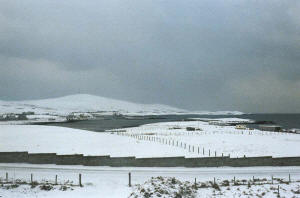
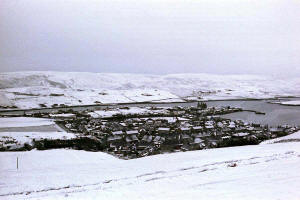
These are views of the Shetland Islands on the drive down towards Sumburgh.
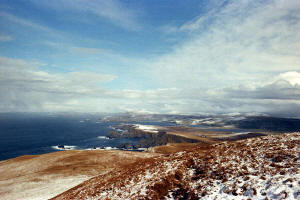
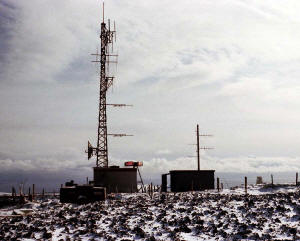
After some tricky navigation and a long drive in low gear up the access road
we came out onto the top of the cliffs to this stunning view. And there also
sat a well weathered Transmitting Station.
One of the local resident BBC engineers welcomed us and gave us some sound
advice which was "not to just pop over there to relieve your self as the
wind up here blows in every direction at once and you are sure to get your
own back"! How right he was.
Well in advance of our trip a special one piece 20m long stout pole had been
ordered from Norway and delivered to the British Airways Helipad at Sumburgh.
As it was their Radar that had set all of this into motion they had agreed
to help.
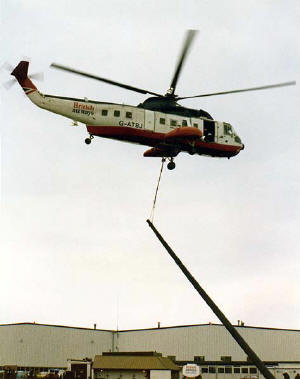
After a couple of safety meetings on how many sheep we may kill during this
operation the helicopter pilot told us that if they got into trouble they
would have to dump the pole where ever they may be and he knew a farmer who
was just looking for something like this.
After we fixed some webbing strops the aircraft just gently lowered itself
over the pole top, hitched up, and lifted off.
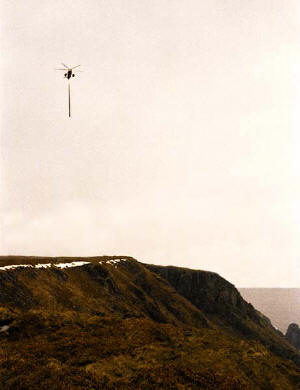
I had high hopes of becoming ground control and batman up at the station end
but British Airwaves seemed reluctant to take up our offer and sent an
expert of their own.
We heard on the radio that it had taken off and the next thing we knew it
was coming over the cliffs at an alarming rate.
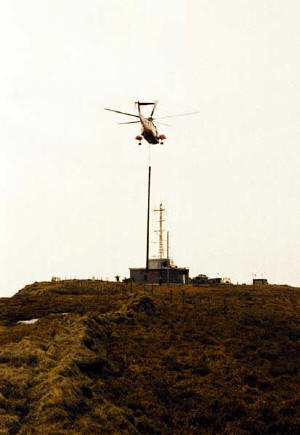
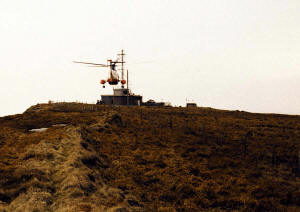
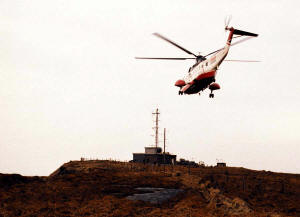
It was always my intention to try and get a photograph looking straight up
at the Helicopter with the pole suspended beneath. But in the excitement of
seeing the Helicopter doorman laying down and waving his arms about I
thought he was about to jettison the pole so self preservation took over for
a second or two.
Actually to the Helicopter crew this was a very easy job because we were
informed later on that they had rescued the crew of a trawler sinking in a
gale off of Shetland and had been awarded medals for bravery.
The Pilot had all along wanted to drop the pole straight into the pole hole
but we had to explain that A: the rock breakers were still trying to get a
hole into Fitful Head and B: the pole would have to be dressed with all of
its equipment before it could be lifted.
They flew off disgruntled.
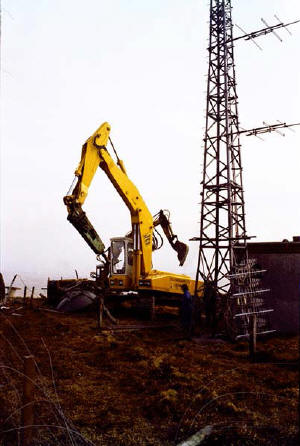
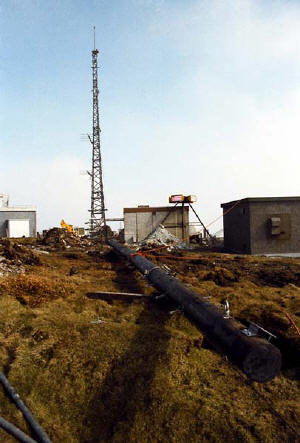
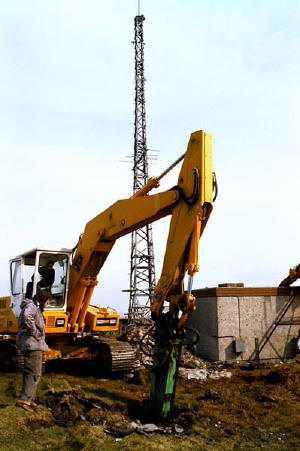
Once the aerial activity had finished the heavy plant could get back to rock
breaking their way down into the very hard granite while we dressed the pole
ready for erection.
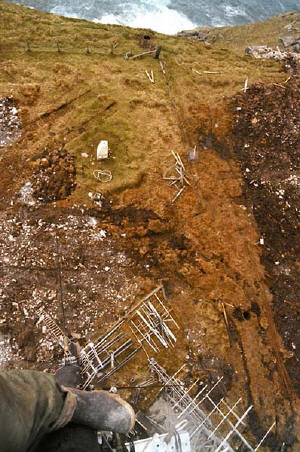

Over the next few days we managed to erect the pole along with its Parafil
stays, install the antenna systems and cables, and carry out the tests
required. It was always a case of judging when to go aloft as the wind was
always a problem and the roaring surf 900ft below concentrated the mind.
But if you were lucky then the views from the top of the pole were stunning
(apart from that new Radar station that is)
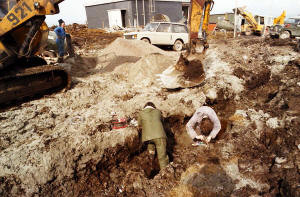
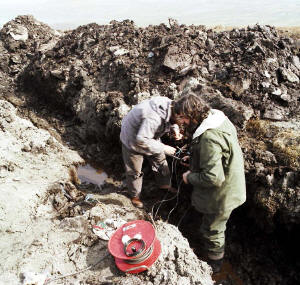
Just as we had finished our part of the installation the contractors working
on the Radar station managed to dig up and tear apart the only BBC feed that
was keeping the station on air.
It meant unpacking the hand tools and soldering irons to carry out a
temporary repair until a proper replacement could be made.
